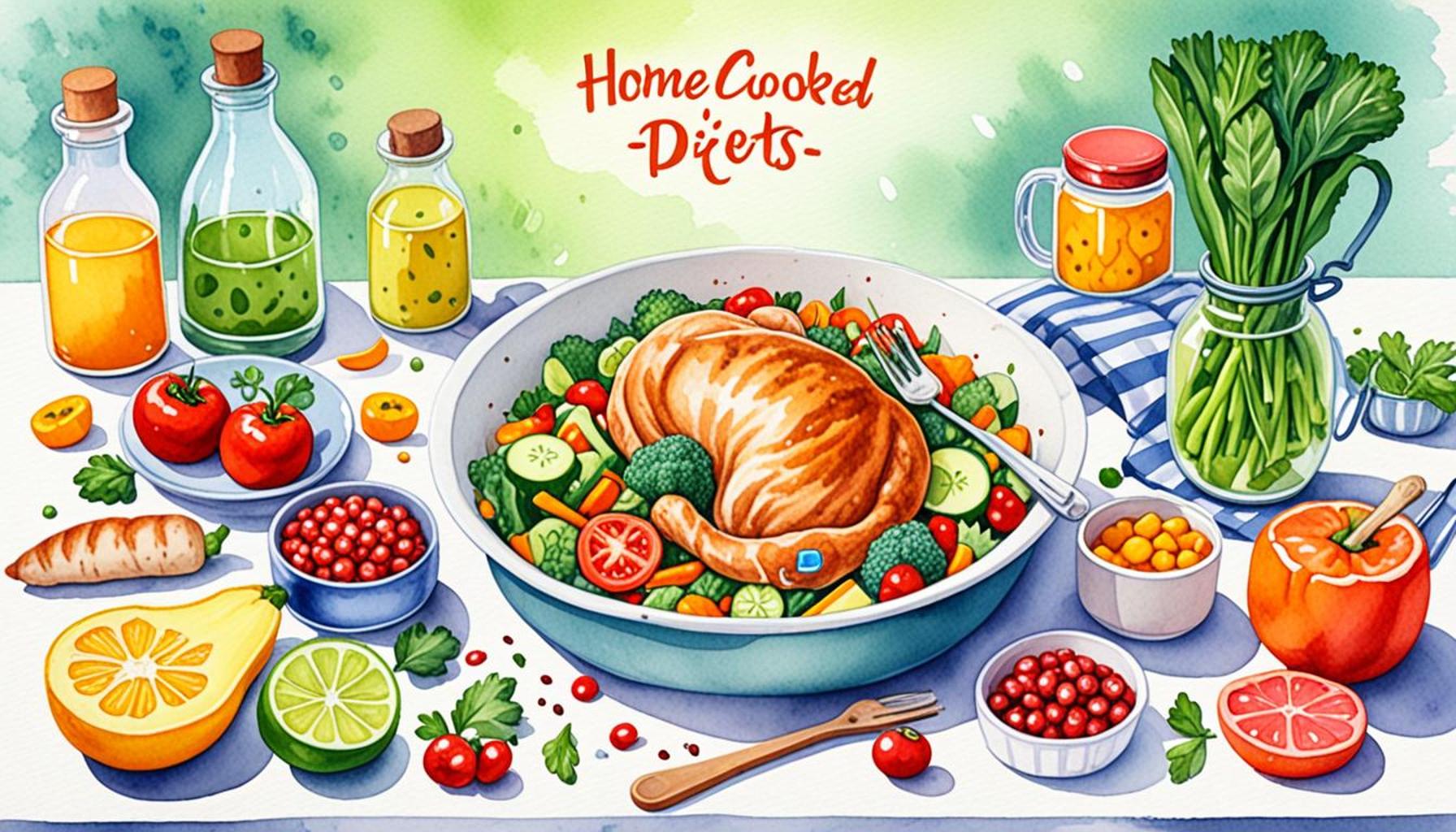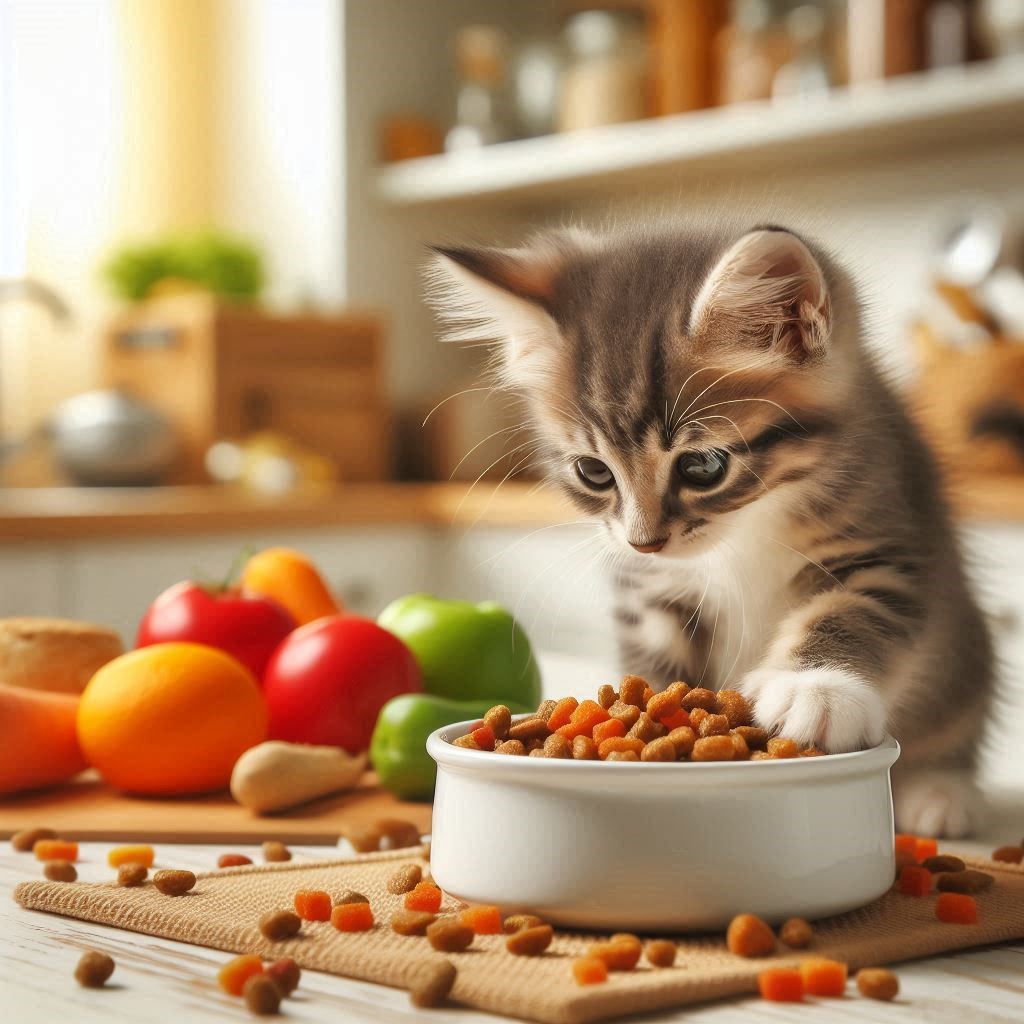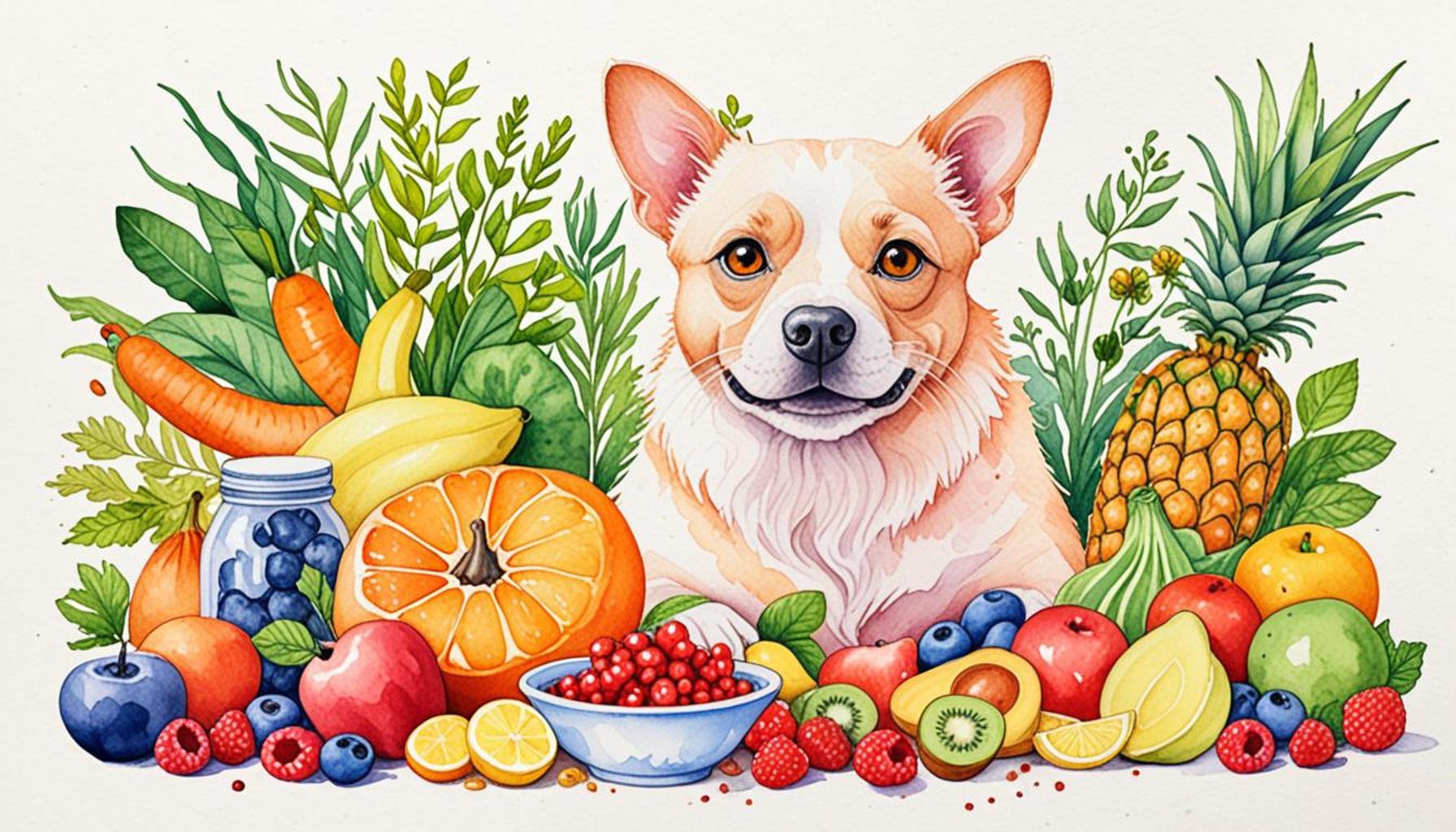Homemade Diets for Pets: Advantages, Challenges, and How to Ensure Nutritional Balance

The Growing Trend of Homemade Pet Diets
The shift towards homemade diets for pets is gaining momentum among pet owners in the United States. Many are drawn by the promise of fresh, natural ingredients and the desire to provide their furry companions with the best possible nutrition. However, the journey to crafting a balanced homemade diet is not without its hurdles.
Exploring the Advantages
One of the primary advantages of making pet food at home is the control over ingredients. Pet owners can choose exactly what goes into their pets’ meals, eliminating artificial fillers and preservatives that are often found in commercial pet foods. For example, opting for high-quality proteins like chicken or fish and incorporating a variety of vegetables can create wholesome meals devoid of harmful additives.
Moreover, homemade diets allow for customization for specific health needs. Pets with allergies or sensitivities can benefit from tailored meals that avoid specific triggers. For instance, a dog that is allergic to wheat can have a grain-free meal plan that substitutes brown rice or sweet potatoes as a carbohydrate source. This individualized attention to dietary needs can greatly improve a pet’s overall health and happiness.
Finally, the advantage of variety in diet cannot be overlooked. Offering a range of ingredients not only keeps meals interesting but also ensures that pets receive a broader range of essential nutrients. This approach can help stave off boredom, making mealtimes in a household much more enjoyable for both the pet and the owner.
Recognizing the Challenges
While the benefits are appealing, there are also significant challenges that must be addressed. One of the foremost concerns is ensuring nutritional balance. Pets require specific ratios of proteins, fats, carbohydrates, vitamins, and minerals, and inadequate nutrition can lead to serious health issues. Pet owners might find it prudent to consult with a veterinarian or a pet nutritionist to formulate balanced recipes tailored to their pet’s unique needs, particularly if the pet has special dietary concerns.

Additionally, the time and effort in meal preparation can be daunting. Preparing homemade pet food can be labor-intensive, requiring careful planning and ingredient sourcing. Owners must be diligent about finding fresh ingredients and dedicating time each week to meal prep, which may not be feasible for everyone.
Lastly, there is the potential for food safety issues. Homemade pet food must be handled and stored with care to prevent contamination. Improper cooking methods or storage can lead to spoilage or dangerous pathogens, posing a risk to pets. Pet owners must educate themselves on best practices to maintain safety in their food preparation routines.
Conclusion: A Commitment to Learning
Navigating the complex landscape of homemade pet diets requires a dedication to researching nutritional requirements that are specific to their pets’ age, size, and health conditions. This journey includes consulting with veterinarians and investing time into learning how to effectively combine ingredients to meet dietary guidelines.
As you delve deeper into this topic, you will discover not only effective strategies for homemade pet diets but also insights into fostering a healthier lifestyle for your pets. Ultimately, the commitment to providing wholesome meals can lead to happier, healthier pets, making the effort worthwhile for many loving pet parents across the nation.
DISCOVER MORE: Click here to learn about their vital role
Weighing the Benefits and Drawbacks
As many pet owners contemplate the switch to homemade diets for pets, it’s essential to weigh both the benefits and challenges before pinning down a comprehensive feeding plan. The allure of fresh ingredients is undeniable, but understanding the practical implications is equally important.
Advantages of Homemade Pet Diets
Embracing homemade pet food is more than just a culinary adventure; it lays the foundation for a plethora of health benefits. For pet owners, these advantages extend beyond simple ingredient control:
- Enhanced Health and Vitality: Many commercial pet foods contain by-products or low-quality fillers that can diminish the overall health of a pet. Conversely, homemade diets enable owners to choose nutrient-rich, high-quality ingredients, potentially leading to better vitality and fewer health issues.
- Prevention and Management of Health Issues: For pets with chronic conditions such as diabetes or kidney disease, a customized diet can play an essential role in management. A mindful recipe can even help in managing weight, reducing the risks associated with obesity, and promoting overall well-being.
- Strengthening Pet-Owner Bond: Preparing meals for pets can foster a deeper connection. The act of cooking for a beloved pet is often viewed as an expression of care and commitment, enhancing emotional bonds within the household.
Challenges to Consider
Despite appealing benefits, switching to a homemade diet presents challenges that can intimidate even the most dedicated pet owner:
- Nutritional Gaps: Pets require a specific balance of nutrients, and crafting a diet that meets these needs can be complex. Pet owners must become educated on nutritional essentials, which vary based on age, size, and health status. Failure to provide balanced meals can lead to deficiencies and health issues.
- Cost Implications: Although homemade diets can save money in the long run, the initial investment in quality ingredients may be higher than the more affordably produced commercial options. Economically savvy pet owners should budget wisely to maintain a consistent food supply.
- Testing for Allergies and Intolerances: Transitioning to homemade diets requires patience. As new ingredients are introduced, the potential for food allergies or intolerances increases. Owners must monitor their pets’ reactions closely and be prepared to adjust meal plans accordingly.
Understanding the balance of advantages and challenges is crucial for pet owners considering homemade diets. Awareness of the nutritional requirements and the associated responsibilities can lead to a fulfilling and beneficial feeding journey for both pet and owner.
| Category | Details |
|---|---|
| Nutritional Control | Homemade diets allow pet owners to have complete control over the ingredients, ensuring a balanced mix of proteins, carbohydrates, and fats tailored to their pet’s needs. |
| Fresh Ingredients | Utilizing fresh, whole ingredients not only enhances flavor but also provides vital nutrients that commercial pet foods may lack. |
| Customization | Pet owners can create a diet suited to their pet’s specific health needs, such as allergies or sensitivities, promoting better overall health. |
| Quality Assurance | Making meals at home ensures that pets consume safe and high-quality ingredients, as opposed to questionable additives present in some commercial options. |
Exploring the topic of homemade diets for pets brings to light not only the advantages but also the challenges pet owners may face when ensuring nutritional balance. Preparing these diets requires research and understanding of proper feline or canine nutrition, often necessitating consulting with a veterinarian or pet nutritionist. Furthermore, maintaining variety in homemade meals is essential to avoid nutrient deficiencies. While the ability to customize meals is a significant advantage, it is crucial to introduce new ingredients gradually to monitor any adverse reactions or digestive issues. Pet owners should also be aware of specific dietary requirements, as not all human food is safe for pets. This comprehensive approach to homemade diets can lead to healthier pets and foster a deeper connection through shared meal preparation.
DISCOVER MORE: Click here to learn how you can make a difference
Ensuring Nutritional Balance in Homemade Diets
When embarking on the journey of creating homemade diets for pets, the emphasis on achieving nutritional balance cannot be overstated. A balanced diet is pivotal to supporting overall health, growth, and well-being. This section aims to provide essential guidelines and resources to help pet owners navigate this critical aspect effectively.
Understanding Nutritional Needs
Before whipping up a pet meal, it’s important to understand that the nutritional needs of pets can vary significantly. Dogs and cats are fundamentally different in their dietary requirements, which translates into distinct nutritional profiles:
- Dogs: Generally omnivorous, dogs need a mix of proteins, carbohydrates, and fats, supplemented with vitamins and minerals. Canines thrive on proteins from meat sources as well as plant-based elements like sweet potatoes and vegetables.
- Cats: As obligate carnivores, cats require a diet that is primarily composed of animal protein. Essential nutrients like taurine, arachidonic acid, and certain vitamins are critical for their health and can typically only be sourced from animal products.
Pet owners must consult resources, such as veterinary nutritionists or reputable books on pet nutrition, to ensure they are fully informed about their pet’s specific dietary needs. Failing to provide a diet that meets these requirements can lead to serious and long-lasting health implications.
Practical Steps for Balanced Meal Preparation
Creating a nutritionally-balanced homemade diet for pets involves several practical steps:
- Calculate Caloric Needs: Understanding how much energy your pet requires is fundamental. The National Research Council (NRC) has established guidelines for estimating daily caloric needs based on factors such as weight, age, and activity level.
- Ingredient Variety: A diverse array of ingredients ensures a broader spectrum of nutrients. Consider incorporating a mixture of proteins (chicken, beef, fish), carbohydrates (brown rice, oats, vegetables), and healthy fats (fish oil, flaxseed oil).
- Supplements: In many cases, supplements may be necessary to fill nutritional gaps. Consult with a veterinarian to determine the right types and dosages. Common supplements include fatty acids, multivitamins, and minerals.
Conducting Regular Health Assessments
As homemade diets can lead to shifts in weight and health, it is critical for pet owners to conduct regular health assessments. Monitoring your pet’s weight, coat condition, energy levels, and stool quality can provide valuable insight into how well they are responding to their diet. Regular check-ups with a veterinarian can also help in adjusting and optimizing the meal plan.
Resource Utilization for Balanced Diet Planning
Many resources are available to pet owners considering homemade diets for their furry friends. Online communities, pet nutrition forums, and reputable websites, such as the American Association of Feed Control Officials (AAFCO), can offer valuable insights and meal templates. Additionally, cookbooks that focus on pet nutrition and wholesome recipes can provide convenient guidance tailored to specific dietary needs.
In a landscape filled with commercial options, homemade diets can provide a tailored solution for many pets. By paying close attention to the nutritional balance, pet owners can confidently serve meals that cater to their pets’ health and happiness.
DISCOVER MORE: Click here to learn how to reduce your cat’s anxiety
Exploring the Nuances of Homemade Diets for Your Pets
Creating homemade diets for pets can offer a unique opportunity to cater to the specific health requirements of your furry companions. One of the primary advantages of this approach is the ability to provide personalized nutrition tailored to your pet’s individual needs. For instance, pets with allergies can benefit from diets that omit specific allergens found in commercial pet foods, thus reducing uncomfortable symptoms such as itching and digestive issues.
However, embarking on this culinary adventure also brings notable challenges. The journey doesn’t merely include tossing ingredients into a bowl; it requires a solid understanding of your pet’s unique nutritional balance. Dogs, for example, require a diverse array of proteins, fats, carbohydrates, vitamins, and minerals, all in precise proportions. In contrast, cats are obligate carnivores, meaning they thrive on a meat-based diet rich in specific amino acids, such as taurine, which is critical for their health.
Practical Steps to Homemade Diet Success
To ensure that your pet receives the essential nutrients, practical steps include calculating your pet’s caloric intake based on their age, breed, and activity level. Websites like the Pet Nutrition Alliance provide calculators to help you determine precise energy needs. Furthermore, incorporating a variety of nutrient-dense ingredients—such as lean meats, vegetables, and wholesome grains—can create a well-rounded meal. For instance, including pumpkin can support digestive health, while adding fish oil provides crucial omega-3 fatty acids that promote a shiny coat.
Regular health assessments are pivotal when transitioning to a homemade diet. A consultation with a veterinary nutritionist can help tailor recipes that fulfill your pet’s specific dietary requirements while preventing potential deficiencies. This professional guidance can be instrumental, especially when considering supplemental nutrients that might not be adequately supplied through food alone.
For pet owners who wish to pursue this rewarding journey, taking advantage of various resources such as veterinary nutritionists, reliable online forums, and specialized cookbooks can provide essential support. Websites like The Pet Food Industry Association and community forums can serve as excellent platforms to share experiences and gather insights on homemade pet diets.
Indeed, as you prepare each meal, keep in mind that your pet’s health hinges not only on affection and care but also on informed dietary choices. With careful planning and dedication, a homemade diet has the potential to foster happier, healthier pets. This meaningful effort may transform mealtime into a joyful connection between you and your beloved animal, making the journey entirely worthwhile.


